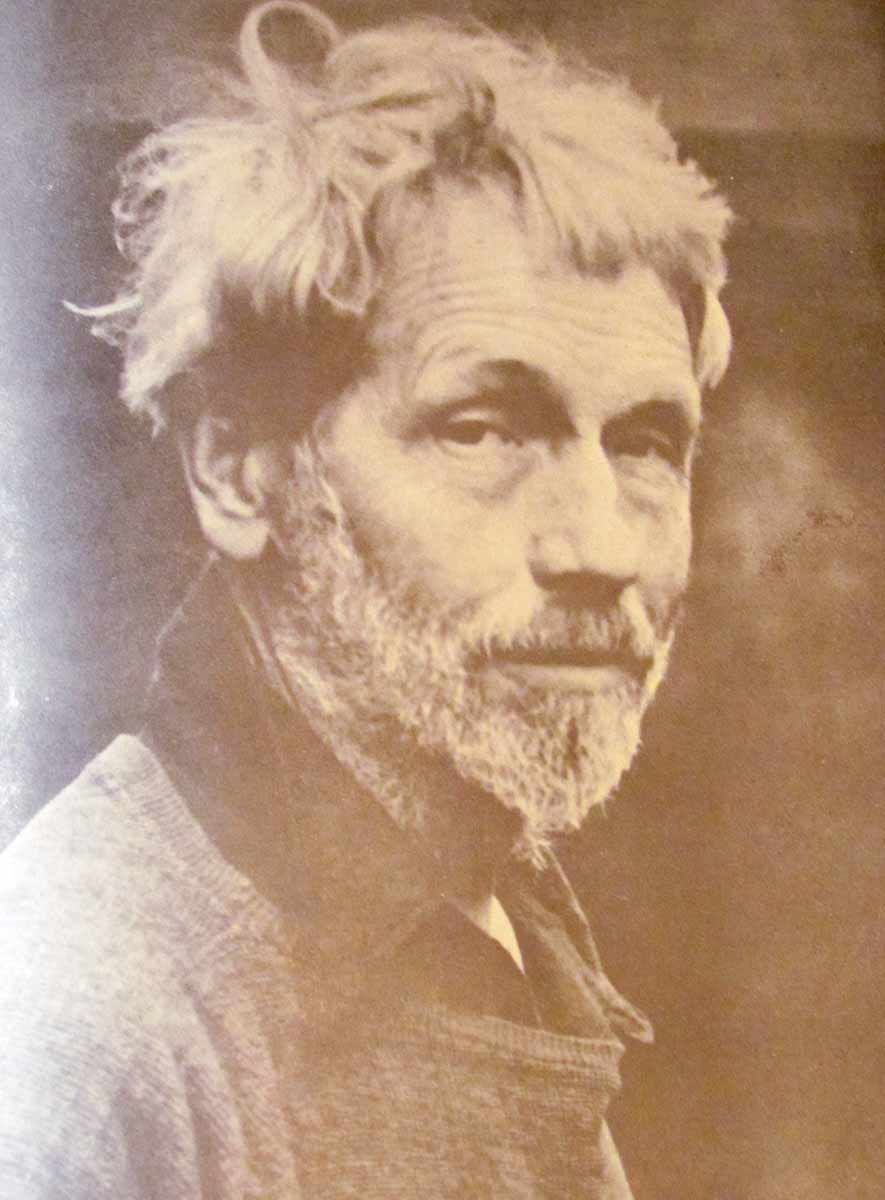Genesis of Woodstock & Artifacts
The go-to reference book “Woodstock History and Hearsay” ©1959 by Anita M. Smith contains an introduction by then president of Woodstock Historical Society Alf Evers, stating “In 1913 Anita Smith came to Woodstock as a talented young painter. In 1931 she presented her first paper to the fledgling Historical Society… Her account of the beginnings and growth of the art colony is no less valuable for having been written by an active participant in events” Alf Evers would later himself author “The Catskills (From Wilderness to Woodstock)” ©1972 and “Woodstock (History of an American Town)” ©1987. The following is drawn from all three publications -
Englishman and wealthy Oxford graduate Ralph Radcliffe Whitehead was constantly planning the ideal community… “with each of us working at whatever art or craft we think we may be able to gain mastership in.” In 1893 he sailed to the US, married Jane Byrd McCall of Philadelphia and after settling in Santa Barbara, California was introduced to another arts and crafts colony dreamer, Harvard educated Hervey White.

Photo of Hervey White, founder of the Maverick Festival begun in 1915, Woodstock, N.Y.
taken from Anita Smith's book Woodstock History and Hearsay
As partners, they hired Bolton Brown, a native of upstate NY and Master of Painting graduate of Syracuse University, to scout a location for their artists’ utopia. After walking through the Catskills “afoot and alone” Brown looked down on “the earthly paradise” of Woodstock, where since the 1870’s, circus and theater people had lived in the town’s Mink Hollow. Believing nearby ruins of an old glass factory to be “a good omen for our craft intentions” he telegraphed Whitehead he had found the right place. On May 31, 1902 the three men met at Mead’s boarding house, where they sat in the pasture chewing “sweet ends of grass while considering the terrain”. Whitehead gave the other two the authority and funds to purchase seven contiguous farms on the side of Overlook Mountain and thus became the founder of Woodstock’s art colony known as Byrdcliffe made up of syllables of the middle names of his wife and himself. To help give a physical shape to the colony White enlisted the help of his friend, painter/poet and ladies man, Swedish born Carl Eric Linden.
After twelve years of Whitehead’s domineering ownership, Byrdcliffe proved a disappointment for Hervey White who shifted his hopes for a socialistic community to a farm three miles to the southeast in the town of Hurley, which he bought and named “The Maverick”. By 1914 New York City’s Greenwich Village, was thriving with unconventional young people drawn from all parts of the United States. As word of Hervey’s ambition spread, Villagers arrived to join the musicians and intellectuals who were finding the communal atmosphere on The Maverick agreeable. The little theater movement was making great progress and in 1915 the Provincetown Players (of Cape Cod Massachusetts) had made their beginning with much visiting back and forth between Provincetown and Woodstock. Essentially, Hervey White needed to finance the drilling of a well to serve the increasing number of summer residents he hosted and decided to turn the lively, imaginative parties which were part of life on the Maverick into a money raising event. A nearby abandoned bluestone quarry was converted into a roofless theater with walls of natural stone and a thousand flyers were sent throughout the Catskills up and down the Hudson Valley. Linking together music, pageantry, art, athletic contests and revelry to form a festival under the light of the August moon was a new variant of a very old event, the Harvest Festival, and everyone concerned agreed that the first of the Maverick Festivals in 1915 was a huge success.
This postcard’s caption reads; FUN AT THE MAVERICK FESTIVAL, WOODSTOCK, NY. The photo, credited to L.E.J. ©1920 shows horses hitched to decorated wagons and festival goers dressed as a band of gypsies.

This is an original hand painted 1”x 7”x 40” wood board which was most likely nailed to a fence along the Glasco Turnpike or up the mountainside directing patrons to the theater.

After Jane Whitehead passed away in 1955, her son Peter Whitehead assumed the administration of Byrdcliffe and welcomed the proposal of a company of opera players to establish themselves in the studio-theater. The Turnau Opera Players gave Byrdcliffe some of the brightest moments in its history.
This photo, reproduced here from photographer Elliott Landy's 1994 book Woodstock Vision, appears in the 2014 catalogue American Cool, presented by the National Portrait Gallery and published by the Smithsonian Institution, with this caption - Bob Dylan in his living room at his Byrdcliff home, Woodstock, New York

A real treasure for anyone with an interest in the historic New York Town of Woodstock - a solid, though faded, original booklet self published by Carl Eric Lindin, one of the founders of the Byrdcliffe artists' colony built on the town's forested mountainside. This slender and still firmly stapled edition has its title, FALLEN LEAVES and the authors name lightly embossed on the front.

The first blank page, or overleaf, bears the inscription; To Anita Smith - With Cordial Greetings - Carl Eric Lindin Woodstock. N.Y. June 1941. The book is a collection of Lindin's own poems, verses and musings about life, art, love and the beauty of Woodstock's surroundings in pieces with titles such as The North Sea - To Louise - The Wave of the Future - A Maverick Concert - The Woodstock Landscape. He mentions his fellow pioneers, family members, his homeland of Sweden and assembles quotes and passages by writers Walt Whitman, Kirkegaard, Shakespeare, Nietzsche and others. A real treasure.

